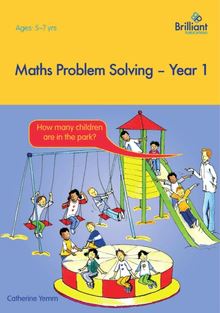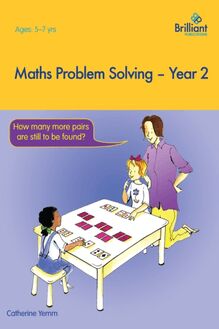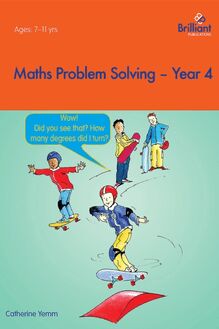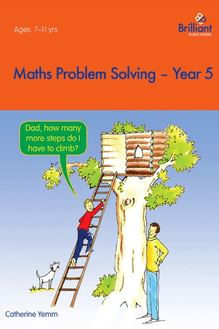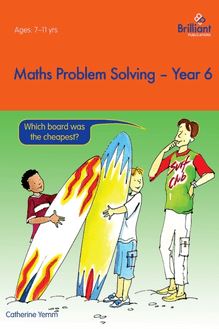-
 Univers
Univers
-
 Ebooks
Ebooks
-
 Livres audio
Livres audio
-
 Presse
Presse
-
 Podcasts
Podcasts
-
 BD
BD
-
 Documents
Documents
-
- Cours
- Révisions
- Ressources pédagogiques
- Sciences de l’éducation
- Manuels scolaires
- Langues
- Travaux de classe
- Annales de BEP
- Etudes supérieures
- Maternelle et primaire
- Fiches de lecture
- Orientation scolaire
- Méthodologie
- Corrigés de devoir
- Annales d’examens et concours
- Annales du bac
- Annales du brevet
- Rapports de stage
La lecture à portée de main
Vous pourrez modifier la taille du texte de cet ouvrage
Découvre YouScribe en t'inscrivant gratuitement
Je m'inscrisDécouvre YouScribe en t'inscrivant gratuitement
Je m'inscrisEn savoir plus
Vous pourrez modifier la taille du texte de cet ouvrage
En savoir plus

Description
Informations
| Publié par | Andrews UK |
| Date de parution | 27 septembre 2011 |
| Nombre de lectures | 1 |
| EAN13 | 9780857475152 |
| Langue | English |
| Poids de l'ouvrage | 2 Mo |
Informations légales : prix de location à la page 0,0650€. Cette information est donnée uniquement à titre indicatif conformément à la législation en vigueur.
Extrait
Title Page
MATHS PROBLEM SOLVING
Year 1
Catherine Yemm
Publisher Information
Originally published by Brilliant Publications
Unit 10, Sparrow Hall Farm, Edlesborough, Dunstable, Bedfordshire, LU6 2ES, UK
E-mail: info@brilliantpublications.co.uk
Website: www.brilliantpublications.co.uk
General enquiries:
Tel: 01525 222292
Digital version converted and published in 2011 by
Andrews UK Limited
www.andrewsuk.com
The name Brilliant Publications and the logo are registered trademarks.
Written by Catherine Yemm
Cover and illustrations by Frank Endersby
© Catherine Yemm 2009
First published in 2005. Reprinted in 2010.
The right of Catherine Yemm to be identified as the author of this work has been asserted by herself in accordance with the Copyright, Designs and Patents Act 1988.
Certain indicated sections may be printed/photocopied by individual teachers acting on behalf of the purchasing institution for classroom use only, without permission from the publisher and without declaration to the Publishers Licensing Society. The materials may not be reproduced in any other form or for any other purpose without the prior permission of the publisher.
Introduction
Maths Problem Solving - Year 1 is the first book in a series of six resource books for teachers to use during the Numeracy lesson. They specifically cover the objectives from the Numeracy framework that are collated under the heading ‘Solving problems’. Each book is specific for a particular year group and contains clear photocopiable resources which can be photocopied onto acetate to be viewed by the whole class or photocopied onto paper to be used by individuals.
Problem solving plays a very important part in the Numeracy curriculum and one of the reasons Numeracy is such an important subject is because the skills the children learn enable them to solve problems in other aspects of their lives. It is not enough to be able to count, recognize numbers and calculate; children need to be able to use problem solving skills alongside mathematical knowledge to help them succeed in a variety of ‘real life’ situations. Many of the problem solving skills and strategies that are needed do not come naturally so they have to be taught.
Problem solving is not an area which should be taught exclusively on its own but one which should be taught alongside other mathematical areas such as numbers, and shape, space and measures. Children will benefit from being given opportunities to solve problems in other areas of the curriculum and away from the classroom as well as in their Numeracy lessons.
When teaching children how to solve problems, the Numeracy strategy refers to a number of points that need to be considered:
•The length of the problems should be varied depending on the age group. Children will benefit from being given short, medium-length and more extended problems.
•The problems on one page or in one lesson should be mixed so that the children do not just assume they are all ‘multiplication’ problems, for example, and simply multiply the numbers they see to find each answer.
•The problems need to be varied in their complexity: there should be some one-step and some two-step problems, and the vocabulary used in each problem should differ.
•Depending on the age of the children the problems can be given orally or in writing. When given written problems to solve, some children may need help to read the words, although this does not necessarily mean that they will need help to find the answer to the question.
•The context of the problem should be meaningful and relevant to the children. It should attempt to motivate them into finding the answer and be significant to the time. For example, euros should be included as well as pounds.
This resource book is organized into four chapters: ‘Making decisions’, ‘Reasoning about numbers or shapes’, ‘Problems involving “real life”, money or measures’ and ‘Organizing and using data’. Each chapter contains six lessons, one to be used each half term.
Making decisions
The objective outlined under the ‘Making decisions’ heading of the Numeracy Strategy for Year 1 children is: Choose and use appropriate number operations and mental strategies to solve problems.
At this age children need to begin to realize that it will not always be obvious how to find the answer to a question. There are different operations they could use and they need to think about which operation is needed to find the answer to a particular question. The questions in this chapter require the children to add or subtract. Mixed questions are given in each activity so that the children are not left to assume that they should add or subtract each time but learn to think openly and make a decision depending on the vocabulary used and the question itself. The emphasis should be on choosing the correct operation. Each question provides the opportunity for the children to explain the operation they used to find the answer; being able to choose the appropriate operation is an important mathematical skill that needs to be developed. The questions have been written using a number of different contexts, including money and measures.
When the children are completing the questions, encourage them to think of the calculation they need to do and write it down. They should also be encouraged to record what they use to work out the answer. For example:
Ben has 3 pencils on his table and Rachel has 5 pencils on her table. How many pencils will they need to put away all together?
I will need to
To help me I will use
The answer is
Reasoning about numbers or shapes
The objectives outlined under the ‘Reasoning about shapes and numbers’ heading of the Numeracy Strategy for Year 1 children are as follows:
•Solve simple mathematical problems or puzzles; recognize and predict from simple patterns and relationships. Suggest extensions by asking ‘What if?’ or ‘What could I try next?’
•Investigate a general statement about familiar numbers or shapes by finding examples that satisfy it.
•Explain methods and reasoning orally.
The activities are a mixture of problems, puzzles and statements. Lessons 1, 3 and 5 are related to shape while lessons 2, 4 and 6 are related to number. When given a statement such as: ‘If you take an odd number away from 5 you get an even number’, the children should be encouraged to provide examples to prove the statement, eg 5 - 3 = 2 or 5 - 1 = 4 . Others may be more obvious questions that just need an answer. The teacher should try to spend time talking to the pupils while they are working to allow them to explain their methods and reasoning orally and to provide an opportunity to ask questions such as ‘What if…?’ The plenary session at the end of the lesson also provides an opportunity to do this.
Problems involving ‘real life’, money or measures
The objectives outlined under the ‘Problems involving ‘real life’, money or measures’ heading of the Numeracy Strategy for Year 1 children are as follows:
•Use mental strategies to solve simple problems set in ‘real life’, money or measurement contexts, using counting, addition, subtraction, doubling and halving, explaining methods and reasoning orally.
•Recognize coins of different values.
•Find totals and change from up to 20p.
•Work out how to pay an exact sum using smaller coins.
The activities in this chapter are typically ‘word problems’. The contexts are designed to be realistic and relevant for children of Year 1 age. The questions involve the operations of adding, subtracting, doubling and halving and the questions deal with money, measurements and everyday situations. Some of the questions are one-step questions while others are simple two-step questions. The teacher should try to spend time talking to the pupils while they are working to allow them to explain their methods and reasoning orally. The plenary session at the end of the lesson also provides an opportunity to do this.
Organizing and using data
The objectives outlined under the ‘Organizing and using data’ heading of the Numeracy Strategy for Year 1 children are as follows:
•Solve a given problem by sorting, classifying and organizing information in simple ways, such as: using objects or pictures; in a list or simple table.
•Discuss and explain results.
As children get older they will be confronted with more and more information. Children need to be taught the skills that will enable them to order and make sense of information they collect or are given. At this age they are not ready to create their own tables in order to organize their information but can complete tables that they are given. They should have the opportunity to see data organized in different ways and to ask questions about the data.
The lesson
Mental starter
In line with the Numeracy Strategy the teacher should start the lesson with a 5–10 minute mental starter. This can be practice of a specific mental skill from the list for that particular half term or ideally an objective linked to the problems the children will be solving in the main part of the lesson. For example, if the problems require the children to add and subtract then it would be useful to spend the first 10 minutes of the lesson reinforcing addition and subtraction bonds and the vocabulary involved.
The main teaching activity and pupil activity
This book aims to provide all the worksheets that the teacher will need to cover this part of the lesson successfully. The f
-
 Univers
Univers
-
 Ebooks
Ebooks
-
 Livres audio
Livres audio
-
 Presse
Presse
-
 Podcasts
Podcasts
-
 BD
BD
-
 Documents
Documents
-
Jeunesse
-
Littérature
-
Ressources professionnelles
-
Santé et bien-être
-
Savoirs
-
Education
-
Loisirs et hobbies
-
Art, musique et cinéma
-
Actualité et débat de société
-
Jeunesse
-
Littérature
-
Ressources professionnelles
-
Santé et bien-être
-
Savoirs
-
Education
-
Loisirs et hobbies
-
Art, musique et cinéma
-
Actualité et débat de société
-
Actualités
-
Lifestyle
-
Presse jeunesse
-
Presse professionnelle
-
Pratique
-
Presse sportive
-
Presse internationale
-
Culture & Médias
-
Action et Aventures
-
Science-fiction et Fantasy
-
Société
-
Jeunesse
-
Littérature
-
Ressources professionnelles
-
Santé et bien-être
-
Savoirs
-
Education
-
Loisirs et hobbies
-
Art, musique et cinéma
-
Actualité et débat de société
- Cours
- Révisions
- Ressources pédagogiques
- Sciences de l’éducation
- Manuels scolaires
- Langues
- Travaux de classe
- Annales de BEP
- Etudes supérieures
- Maternelle et primaire
- Fiches de lecture
- Orientation scolaire
- Méthodologie
- Corrigés de devoir
- Annales d’examens et concours
- Annales du bac
- Annales du brevet
- Rapports de stage
